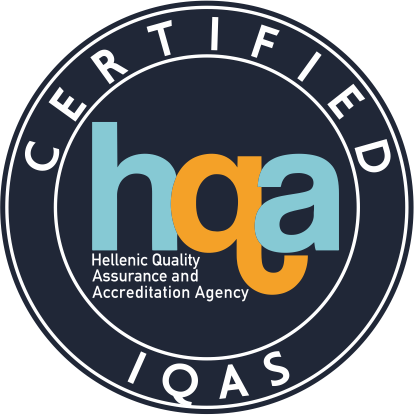The Geology-Paleontology Museum of the School of Geology of the Aristotle University of Thessaloniki was founded in 1927. It is housed in the Geology-Paleontology Laboratory, located in the right wing on the ground floor of the old building of the Faculty of Sciences (former Faculty of Physics and Mathematics).
The Museum covers an area of about 60m², where the collections of the laboratory are kept. These include material from the research activities carried out by its members. Typical samples of geological-paleontological interest from Greek areas are also displayed.
The Museum collections are divided intro three major categories:
- Minerals and rocks of Greece: it consists of a petrographic collection with regards to the structure and development of geology in Greece, a collection of minerals from the mine in Stratoni, Chalkidiki, and the one in Lavrio, enriched with representative minerals of Europe, a collection of types of Greek marble and a collection of black coal specimens from areas around Greece.
- A paleontological collection of invertebrate organisms, which traces the evolution of invertebrate organisms through the geological time periods (from 600 million years ago until today), and it contains specimens from Greece and Europe, such as Trilobites, Ammonites, Hippurites, etc.
- A paleontological collection of vertebrate organisms, which traces the evolution of mammals – the research activities carried out at the laboratory focus mainly on this field of study. The collection mostly contains mammal fossils from various areas of Greece (the Axios valley, Mygdonia basin, Grevena basin, Thessaly, Petralona, Nikiti in Chalkidiki, and other areas), and also skulls and bones of antelopes, equidae, giraffes, carnivore animals, rhinoceros and proboscideans which lived in Greece over the last 10 million years.
The history of mankind
The paleoanthropological collection is of great interest, since it contains plaster casts of primitive primates and hominidae from all over the world, providing everyone with the opportunity to trace the evolution of the human species. Two of the most interesting specimens in the world are also displayed in the Museum:
- part of the skull of Ouranopithecus macedoniensis, 9.5 million years old, which was found in the region near river Axios, and
- the skull of “the Petralona Man,” 200,000 years old, which is considered to be part of a very late Homo erectus and a milestone in human evolution.
The Museum is open to the public every Thursday morning, except during vacation periods. For groups larger than 10 students or adults, please contact the Museum in advance (contact number: +302310.99.8540, D. Kostopoulos).








